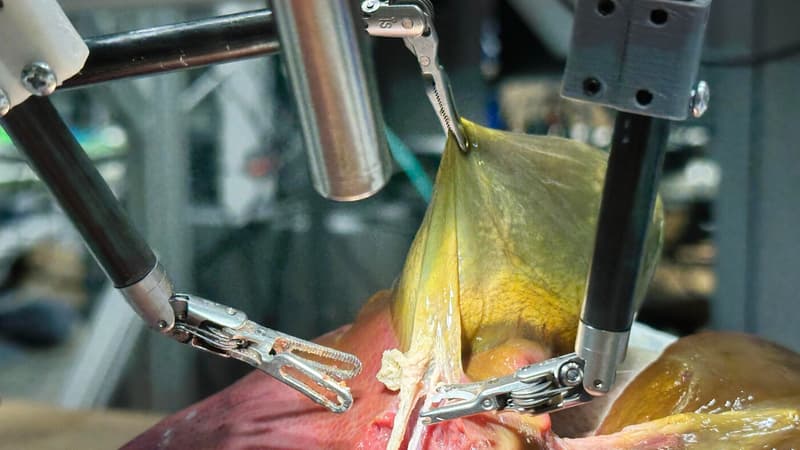A first. In the United States, a robot operated a “patient” without human intervention, as part of a study. Developed by researchers from the Johns-Hopkins University, SRT-H has eliminated the gallbladder, reacting to the vocal controls of the equipment during the operation.
Designed with the same automatic learning architecture as Chatgpt, the robot is interactive, which can respond to orders such as “seized the head of the gallbladder. Learning thanks to the returns, you can also make decisions on the march and adapt to the individual anatomical characteristics in real time, according to specialists.
A complex operation
Before carrying out this operation, SRT-H was carried out to carry out three fundamental surgical tasks, namely, to handle a needle, raise the tissues and suture. If they only take a few seconds each, the elimination of the gallbladder is much more complex.
Not only were 17 tasks necessary for several minutes, but the robot had to identify certain channels and arteries, understand them accurately, place clips strategically and cut pieces with scissors.
To learn to carry out this operation, SRT-H has seen videos of university surgeons who previously carried out the same intervention in pig bodies. Videos in which the experts had placed legends that described the tasks.
Therefore, the robot was able to operate the patient with a 100%precision. He worked perfectly throughout the operation, even in unexpected situations, such as when the team added blood coloration to modify the appearance of the gallbladder and surrounding tissues.
An important advance
If the results were comparable to those of an expert surgeon, the researchers recognized that the robot had taken more time than a human. “This clearly demonstrates that it is possible to carry out surgical interventions independently,” said Axel Krieger, a medical roboticist and co -author of the study.
This success represents an important advance for the team of scientists compared to the previous work. In 2022, another of his robots, Star, had already carried out the first autonomous operation in a living animal. It was a laparoscopy in a pork, an operation that was carried out in a highly controlled environment, with a star that followed a strict and predetermined surgical plan and the tissues that were especially marked.
In other words, where the first intervention returned to teach a robot to drive on a carefully tracked route, the second consisted of teaching a machine to “navigate in any way, in any condition, reacting intelligently to everything he knows,” said Axel Krieger.
From now on, researchers want to train and test their system in other types of surgical interventions and extend their capabilities to carry out an operation in total autonomy.
Source: BFM TV


